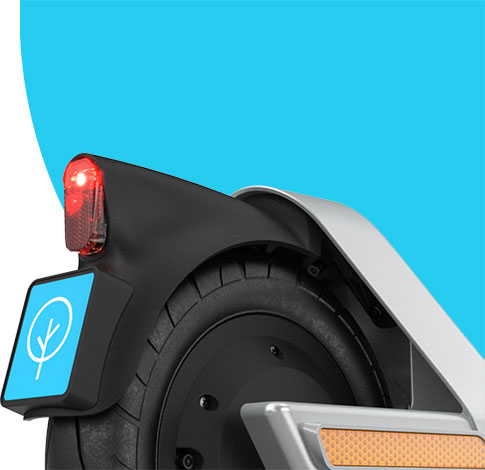Experience, as the idiom goes, is the best teacher. So it is with micromobility.
Shortly after launching the world’s first shared e-scooters in 2017, the Bird team realized that the long-term physical demands of this new industry exceeded the durability of off-the-shelf vehicles. So, with the encouragement of our city partners, we got to work developing and launching Bird Zero, the very first custom-designed e-scooters built to withstand the rigors of shared use.
More than two years after their release, a clear picture is now emerging of just how this improved durability has translated into increased sustainability—and perhaps nowhere is this more evident than in the city of Antwerp, Belgium.
1,310
That’s the average number of trips-per-scooter made on a sampling of 10 of the most ridden Bird Zeros in Antwerp as of the first week of January, 2021. Combined, these vehicles account for tens of thousands of kilometers traveled. Each ride also represents a percentage of a car trip that was avoided thanks to the availability of shared micro-EVs.
When we talk about sustainability, however, we’re not only talking about reducing carbon pollution related to personal automobiles and ride hailing. By extending the lifespan of our fleet, we’re also reducing each vehicle’s per-mile lifetime carbon emissions. The longer each Bird Zero is in service, the lower its overall carbon footprint and the fewer manufactured vehicles needed to meet demand.
Of the 10 scooters referenced above:
- 2 were launched in December, 2018
- 6 were launched in January, 2019
- 2 were launched in April, 2019
That means that the average age of these vehicles is 23.6 months, and each of them is still going strong.
A Legacy Tens of Thousands Strong
The longer battery life, enhanced lighting, increased durability and advanced GPS technology of the Bird Zero laid the groundwork for the development of all custom-built scooter models to follow including the Bird One, Bird Two and Bird Air. But its legacy doesn’t stop there.
Tens of thousands of these trailblazing e-scooters are still in operation today across the US and Europe, helping riders safely reduce their dependence on personal cars and helping cities achieve their ambitious new sustainability goals.
There’s a lot we can continue to learn from the success of these dependable vehicles. Every kilometer traveled, every additional month on the road and every new rider story teach us more about how sustainable mobility impacts and improves city life. And you can rest assured that we’ll keep passing these insights on to you.
To stay informed about Bird’s continuing efforts to improve sustainability, subscribe to the Bird Cities Blog.

